Plus, there's a new chapter on "epigenetics and diet in pregnancy" that describes the link between maternal nutrition and long-term child health. Lammi-Keefe served as lead editor of the first edition of the Handbook of Nutrition and Pregnancy that was published in 2008.
Conclusions
Nutrient and Health Needs in Pregnancy
Metabolism During Pregnancy
High-Risk Pregnancies
The Postpartum Period
O’Connor, PhD, RD Department of Nutritional Sciences, The Hospital for Sick Children, University of Toronto, Toronto, ON, Kanada. Susan Trang, BSc, BASc Department of Nutritional Sciences, The Hospital for Sick Children, University of Toronto, Toronto, ON, Kanada.
Nutrient and Health Needs in Pregnancy
Keywords Body composition · Gestational weight gain · Fat mass · Fat-free mass Total body water · Birth weight. The variance in total weight gain in pregnancy is the result of variable increases in fat mass.
Assessment of Body Composition During Pregnancy
Equations to estimate body composition from skinfold thickness also use body weight and body composition (FM, FFM). Therefore, estimates of body composition in pregnancy by DXA should be interpreted with caution.

Gestational Weight Gain
Historical examinations of weight gain during pregnancy conclude that very little weight gain occurs in the first trimester and weight increases thereafter in a linear fashion until delivery [40]. Furthermore, rapid weight gain during infancy is also associated with the development of obesity later in life [ 93 , 94 ].
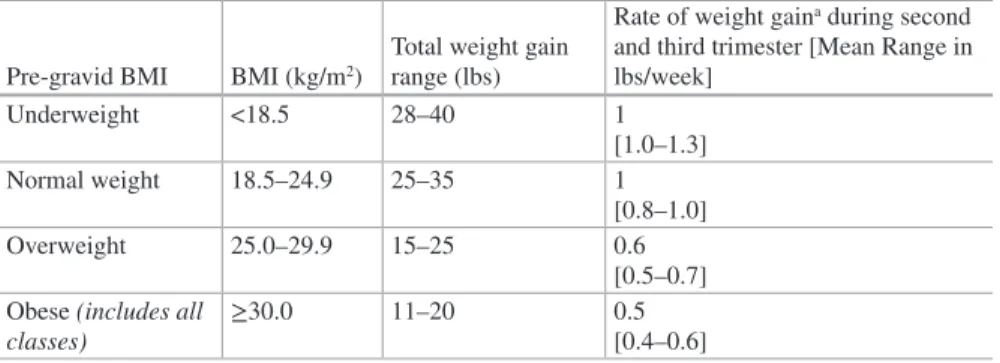
Body Composition Changes and Impact on Physiology in Pregnancy
Whether changes in the use of substrate in early pregnancy can affect the size of the child at birth has not yet been clarified and is an important consideration for future research. Limited information is largely the result of the challenges associated with methodological issues and challenges in measuring body composition during pregnancy.
Pregnancy increase by body mass index among US women delivering live births fuels future obesity. Excessive gestational weight gain predicts large for gestational age newborns independently of maternal body mass index. Patterns of pregnancy gain related to fetal growth among overweight and obese women.
Pregnancy Outcomes
Introduction
Iron Balance in Pregnancy
Using stable isotopes of Fe, studies in pregnant women have found that hepcidin explains approximately 30% of the variability in intestinal absorption of non-heme Fe [16]. Almost all of the focus on Fe absorption during pregnancy has focused on the regulation of nonheme Fe absorption. In contrast to the significant effect of maternal Fe status on non-heme Fe absorption, heme Fe absorption was not associated with Fe status or hepcidin at.
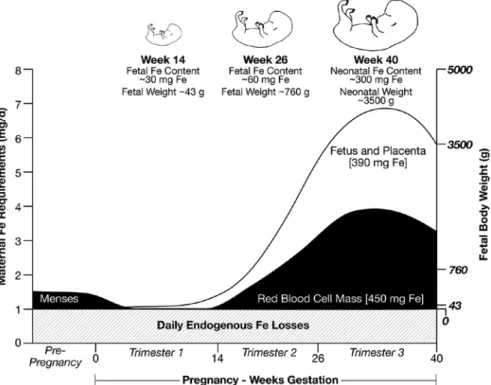
Adverse Effects of Iron Supplementation
If the study population had not been stratified by baseline Fe status, the impact of Fe supplementation from either supplement would likely have been attenuated and the ability to regulate Fe absorption as a function of maternal Fe status would have been may not have been appreciated. The authors noted that heme Fe intake was associated with an increased risk of gestational diabetes, but questioned the reliability of these results due to the small number of studies answering this question [29]. Given the importance of this question and the fact that dietary intake of heme and non-heme are modifiable factors, additional attention should be paid to the relative impact of dietary Fe intake and Fe status on the risk of gestational diabetes. justified.
Assessment of Iron Status Across Gestation
Hepcidin concentrations during pregnancy have been evaluated for their association with other Fe status and hematological indicators. Evaluating a comprehensive panel of Fe status biomarkers during pregnancy, erythropoietin was recently found to be highly correlated with Hb, SF, TfR, serum Fe and TBI both in mid-pregnancy and at delivery [ 38 , 41 ]. More data are needed to explore other Fe status biomarkers that may be predictive of maternal and neonatal Fe stores, yet are unaffected by the increase in inflammation evident in late pregnancy and during labor and delivery. .
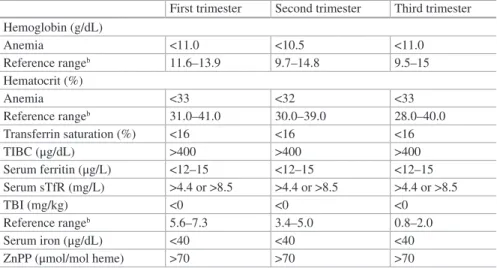
Anemia and Iron Deficiency Anemia During Pregnancy
The authors uniquely analyzed their data to determine whether there were thresholds at which maternal ppBMI influenced indicators of mid-pregnancy Fe status. Using this approach, relationships between ppBMI and Fe status became apparent when maternal ppBMI exceeded 30 kg/m2. Another study on maternal obesity and Fe status was conducted among a cohort of 240 pregnant adolescents [61].
Maternal Iron Supplementation, Maternal Birth Outcomes, and Iron Status
According to national data, approximately 65% of multiparous women give birth prematurely [74], putting their newborns at increased risk of early-onset anemia. In a large-scale screening study of multiparous women and their 197 newborns, maternal ID and IDA were significantly more prevalent than values reported from national NHANES data in singleton pregnancies. The United States currently has no specific dietary recommendations for multiparous women or their newborns to ensure adequate Fe stores at birth.
Gaps in Knowledge
Several challenges in assessing Fe status during pregnancy have not yet been resolved. These factors have a substantial impact on the interpretation of biomarkers of Fe status during pregnancy. Additional variability in the assessment of neonatal Fe status is introduced due to variability in the clinical cord clamping procedures used.
Conclusion
There is a physiological increase of 10-20% in thyroid volume in pregnant women who have sufficient iodine, due to increased blood flow. The use of iodine-containing prenatal supplements is not widespread, at least not in the US. Challenges in evaluating urinary iodine status during pregnancy: the importance of iodine supplement intake and timing of sampling.
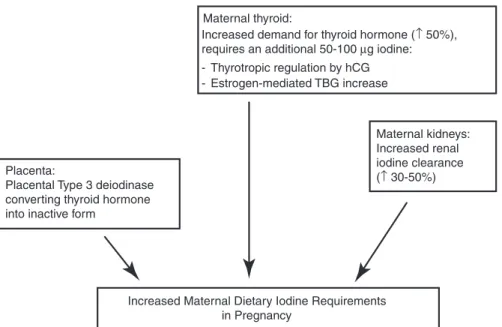
A New Paradigm
The conversion of vitamin D to 25(OH)D occurs unchanged during pregnancy following first- and zero-order enzyme kinetics [14]. The role of vitamin D and skeletal function during pregnancy and lactation has been previously discussed [1, 2, 3]. Sources of vitamin D for vegetarians include fortified foods (milk, soy and other plant milks, breakfast cereals, margarine), egg yolks, and vitamin D supplements [1].
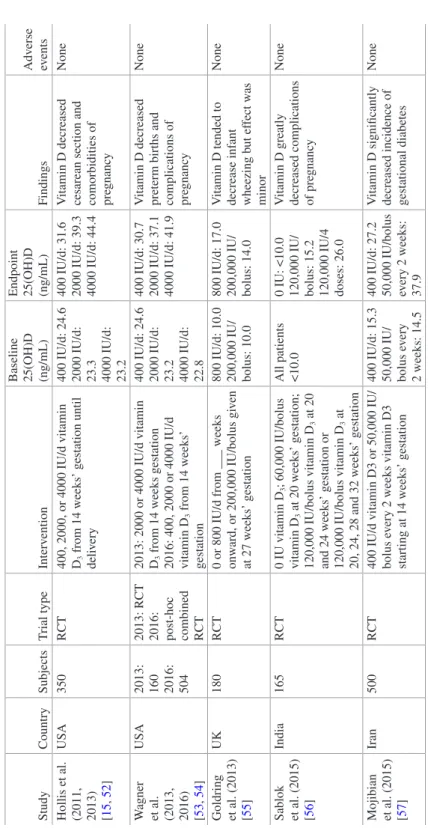
Nutrition and Sleep
The quality of sleep and the presence of sleep disorders vary greatly throughout the lifespan of women. The role of sleep, the emergence of sleep disorders, and the potential impact of these factors on pregnancy outcomes have been widely studied over the past decade. In addition, it will provide an overview of two of the most common sleep disorders that occur during pregnancy (ie, obstructive sleep apnea and restless legs syndrome) and the role that nutritional intake can directly and indirectly play in their occurrence.
Obstructive Sleep Apnea and Pregnancy
Restless Legs Syndrome and Pregnancy
It has been suggested that in addition to low iron and folate levels, relatively higher levels of estradiol, progesterone and prolactin during pregnancy may play a role in the development of RLS [37]. The preferred drugs for the treatment of RLS during pregnancy are clonazepam and carbidopa-levodopa, with the goal of using the lowest effective dose for the shortest possible time. Unfortunately, the recurrence rate in future pregnancies is 30% and women who experience RLS during pregnancy are more likely to develop primary RLS later in life [28, 43].
Sleep and Pregnancy
Consensus clinical practice guidelines for the diagnosis and treatment of restless leg syndrome/Willis-Ekbom disease during pregnancy and lactation. Restless legs syndrome and pregnancy: follow-up of pregnant women before and after delivery. Keywords High-risk foods · Listeriosis · Salmonellosis · Safe food handling Foodborne illness · Food safety during pregnancy.
Safe Food Handling
Fruits and vegetables should be washed under running tap water to remove dirt and contaminants. The cutting boards and knives used for cutting raw meat, poultry and seafood and those for fruits and vegetables should be separated. Food preparation countertops and cutting utensils should be washed well with hot water and dish soap after preparing meat, poultry and seafood [11].

Importance of Personal Hygiene and Sanitation
Food Selection
A recent survey of pregnant women found that surveyors reheat these foods to maintain quality and not because of food safety concerns [29]. Food safety practices among pregnant women and mothers in the Women, Infants, and Children Program, Miami, Florida. The online continuing education course increases nutrition and health professionals' knowledge of food safety issues of high-risk populations.
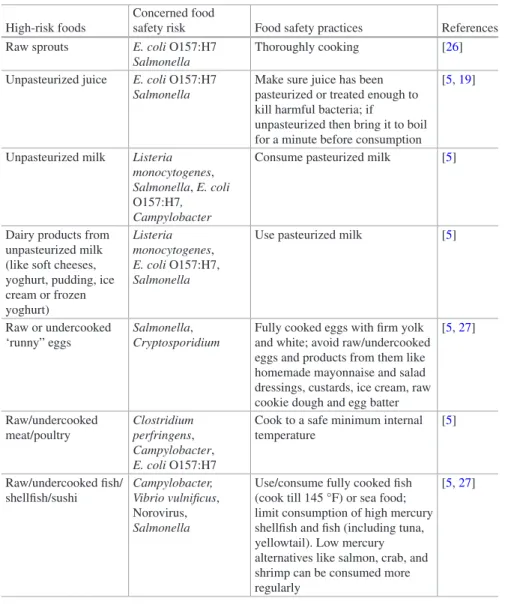
Metabolism During Pregnancy
Introduction to One-Carbon Metabolism
THF can be used for purine synthesis via conversion to 10-formyl-THF using formate as a one-carbon donor. Alternatively, THF can be converted to 5,10-methylene-THF using serine as a one-carbon donor and vitamin B6 as a cofactor. This reduces the availability of folate for the synthesis of purines and thymidylate, the rate-limiting factor in DNA synthesis [1].
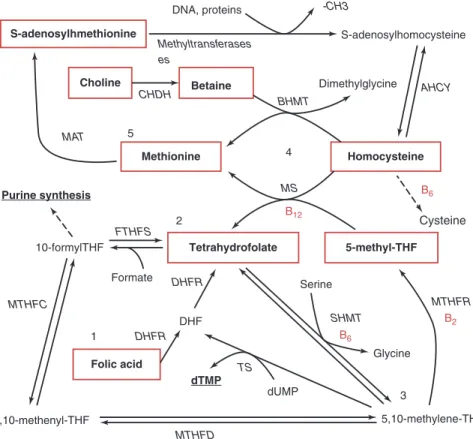
One-Carbon Nutrients Folate
Dietary vitamin B12 is bound by haptocorrin (also known as R-binding) in the mouth and stomach, protecting it from gastric acid. After entering the duodenum, vitamin B12 is released by haptocorrin and binds to intrinsic factor (IF). Vitamin B12 is then absorbed in the ileum as an IF-B12 complex; Vitamin B12 deficiency develops rapidly in those with IF deficiency.
Recommended Dietary Intake Levels of One-Carbon Nutrients During Pregnancy
Although the protective effects of folic acid on neural tube defects (NTDs) are well established, this has not been considered in determining the RDA because the critical window for neural tube closure occurs before most women know they are pregnant. [17]. Folate deficiency is now rare in the United States due to folic acid fortification of the food supply. Thus, the amount of DFEs in a meal is equal to μg dietary folate + (1.7 × μg folic acid).
Effects of Genetic Variation on Dietary Recommendations Folate
Excessive consumption of choline can lead to a fishy body odor, which is caused by increased production and excretion of the choline metabolite trimethylamine. In addition, a high dose of choline can lead to hypotension (low blood pressure), increased sweating, vomiting and salivation due to excessive production of the neurotransmitter acetylcholine. One of the most studied SNPs is found in the promoter region of the PEMT gene (-744G → C, rs12325817), which is transcriptionally upregulated by estrogen to synthesize endogenous choline.
Nutrient–Nutrient Interactions Folate and Vitamin B12
Genetic variants in the folate metabolism pathway, such as MTHFR, MTHFD1, and MTR, may also increase the requirement for choline in women of reproductive age. However, this association is not consistently seen in all studies; In addition, it may reflect a redistribution of vitamin B6 in tissues rather than a true deficiency [17]. Because of their interdependence in the methyl cycle, disturbance in folate metabolism due to genetic variations in folate metabolizing genes or an inadequate folate diet will result in compensatory changes in choline metabolism and a higher dietary requirement for choline, as shown in many animals and humans. studies [67-71].
Common Food Sources for One-Carbon Nutrients
Good sources of vitamin B6 are widely distributed in the major food groups, including fruits and vegetables, grains, legumes, and meat. Choline is distributed in a wide variety of foods, but animal foods such as eggs, meat, and seafood are the richest sources of choline. Unlike folic acid, vitamin B12, and vitamin B6, choline is not routinely found in prenatal supplements [78], but can be found in various forms (eg, choline salts and
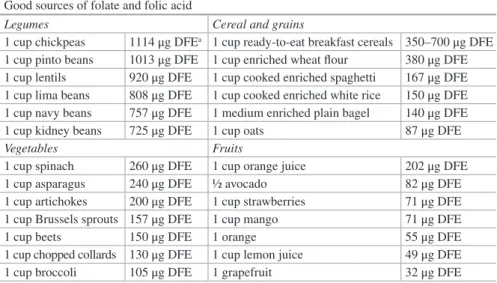
Effects of One-Carbon Metabolic Nutrients on Pregnancy Outcomes
Zeisel SH, Da Costa KA, Franklin PD, Alexander EA, Lamont JT, Sheard NF, et al. Maternal periconceptional folic acid intake and risk of autism spectrum disorders and developmental delay in the CHARGE (Child Autism Risks from Genetics and Environment) case-control study. Vitamin B12 and folate concentrations during pregnancy and insulin resistance in the offspring: the Pune Maternal Nutrition Study.
What Is Epigenetics and Why Is it Important?
A healthy diet during pregnancy should therefore ensure optimal growth of the fetus, the health of the mother and the ability to maintain lactation after delivery. Furthermore, much evidence from epidemiological studies has emphasized the importance of a healthy diet during pregnancy for the long-term health of the offspring [2-6]. An increasing number of studies have examined whether DNA methylation patterns at birth reflect changes in the intrauterine environment and have attempted to link these to the health of the offspring later in life.
Imprinted Genes
One such study of cord blood methylation patterns identified several genes where cord blood DNA methylation correlated with childhood body composition [12].
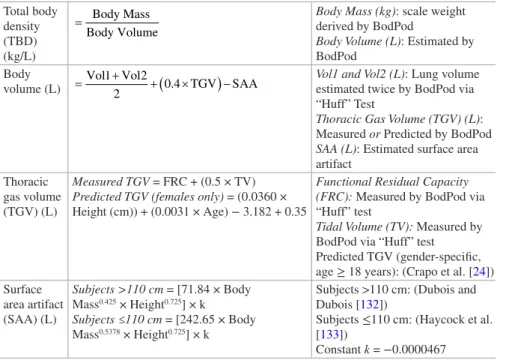
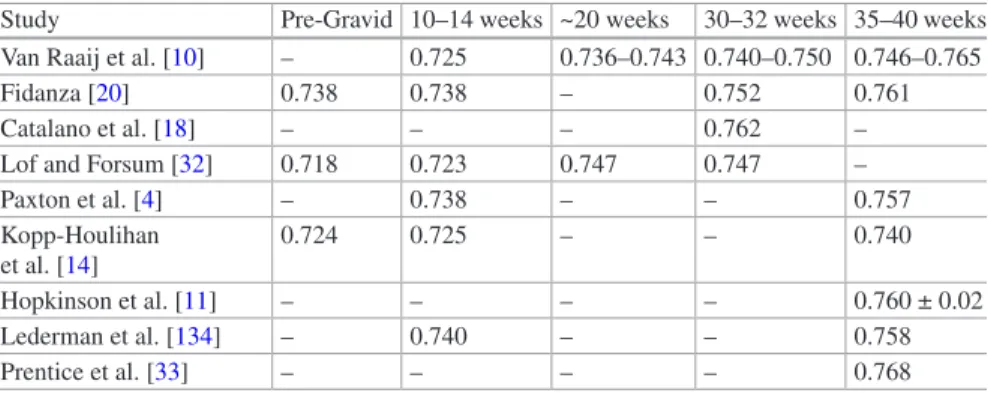
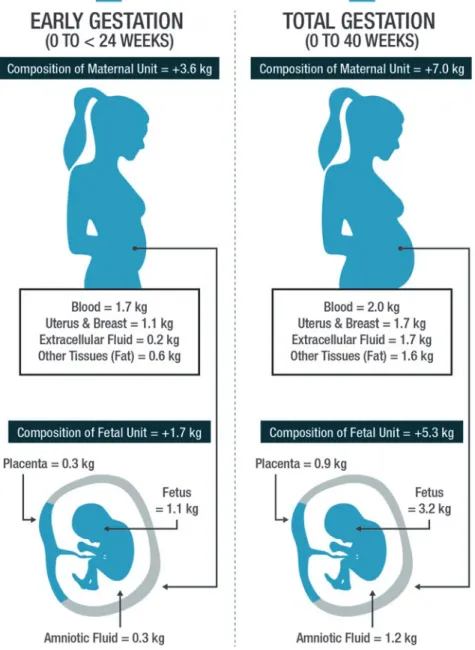

![Table 2 Measures indicating population-level iodine sufficiency [11]](https://thumb-ap.123doks.com/thumbv2/azdoknet/10577578.0/94.659.83.582.498.855/table-measures-indicating-population-level-iodine-sufficiency-11.webp)